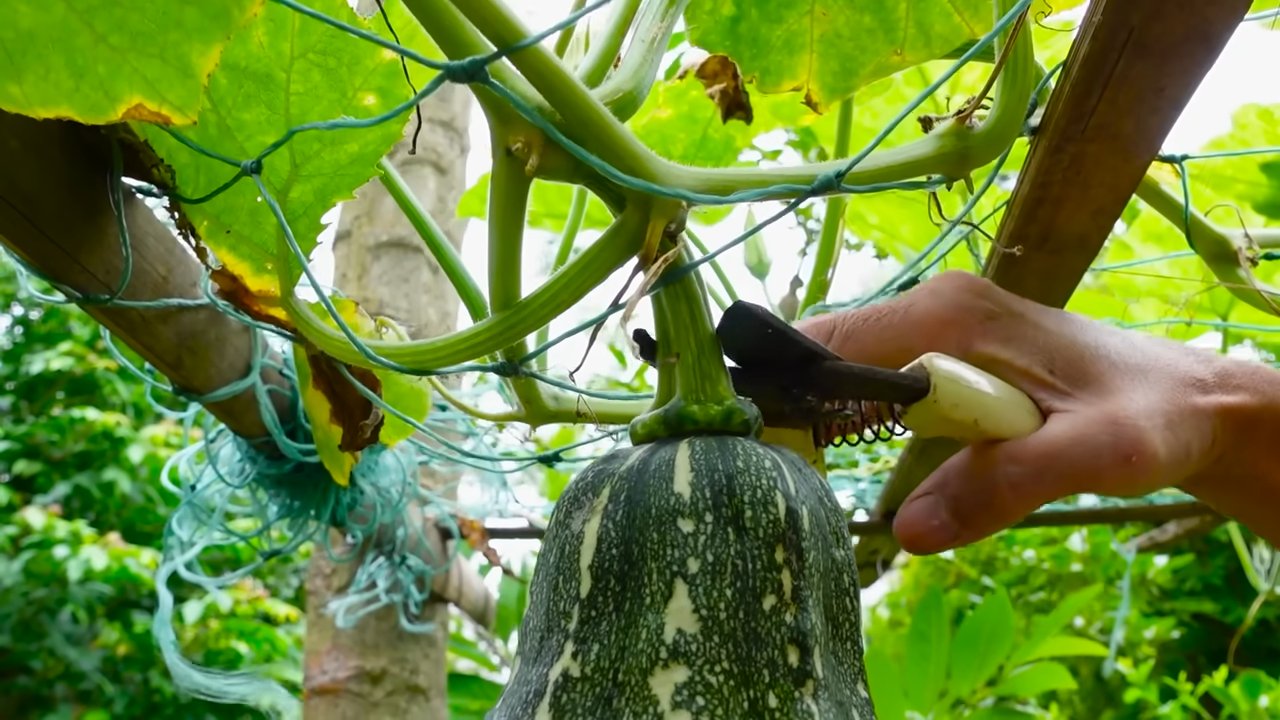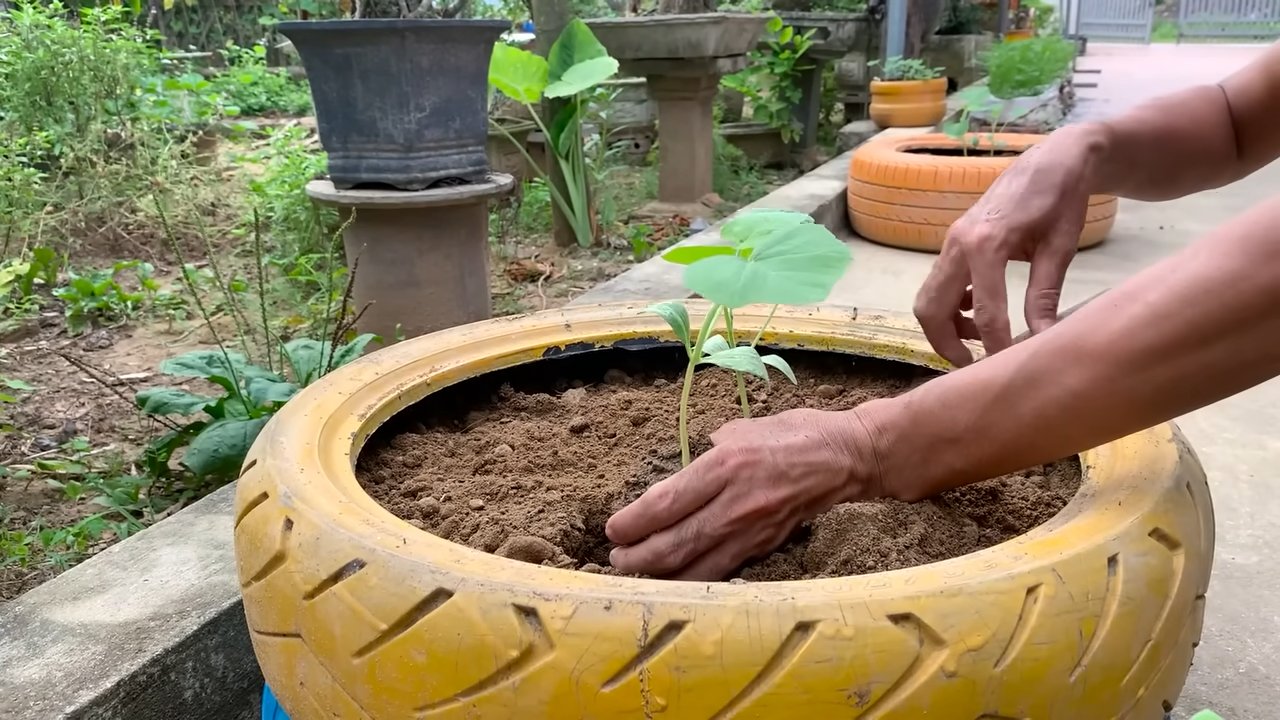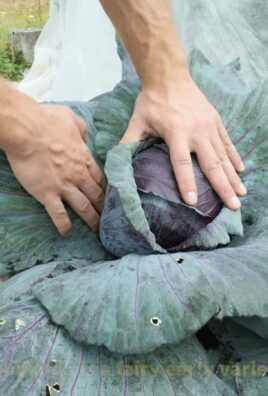Grow Giant Pumpkins Tires: Ever dreamt of growing a pumpkin so massive it could win a county fair? Or maybe just one big enough to carve the most epic Jack-o’-lantern on the block? I know I have! While genetics play a huge role, the secret weapon for many champion pumpkin growers might surprise you: old tires!
The practice of using tires in gardening, while not ancient, has roots in resourceful, sustainable living. Farmers and gardeners have long sought ways to improve soil warmth and drainage, and repurposing discarded tires offers a clever solution. Think of it as a modern twist on raised bed gardening, with a touch of upcycling flair.
But why tires specifically for giant pumpkins? Well, these behemoths need all the help they can get! The dark color of the tire absorbs sunlight, warming the soil and extending the growing season – crucial for these heat-loving giants. Plus, the tire acts as a mini-greenhouse, protecting the young plant from harsh winds and temperature fluctuations. This DIY trick is a game-changer because it provides a controlled environment, giving your pumpkin the best possible start. If you’re serious about cultivating a prize-winning pumpkin, or simply want to impress your neighbors with a truly colossal gourd, learning how to grow giant pumpkins tires is a must! Let’s dive into the steps and secrets to make your pumpkin dreams a reality!

Growing Giant Pumpkins: My Tire Trick for Massive Gourds!
Okay, pumpkin fanatics, gather ’round! I’m about to share my secret weapon for growing pumpkins so big, they’ll make Cinderella jealous. It involves tires. Yes, you read that right. We’re going to use old tires to create a mini-greenhouse effect and supercharge your pumpkin’s growth. Trust me, this works!
Why Tires? The Science Behind the Magic
Before we dive in, let’s talk about why this works. Tires absorb heat from the sun during the day and slowly release it at night. This creates a warmer microclimate around your pumpkin plant, which is crucial for rapid growth, especially in cooler climates or during those unpredictable spring and fall nights. Plus, the tire acts as a windbreak, protecting your precious pumpkin from damage. Think of it as a cozy little pumpkin incubator!
Materials You’ll Need
* Old tires (preferably large ones, like those from a truck or tractor, but car tires will work too – you might just need more of them)
* Good quality potting soil or compost
* Pumpkin seeds (Atlantic Giant variety is the classic choice for giant pumpkins)
* Gardening gloves
* Shovel or spade
* Watering can or hose
* Optional: Clear plastic sheeting or greenhouse film
* Optional: Stakes or supports
Choosing the Right Location
Location is key! Pumpkins are sun-worshippers. They need at least 6-8 hours of direct sunlight per day. Also, make sure the area has well-draining soil. Pumpkins hate having wet feet.
Step-by-Step Guide: Tire Time!
Here’s the breakdown of how to turn those old tires into pumpkin-growing powerhouses:
1. Prepare the Ground: Start by clearing the area where you plan to grow your pumpkin. Remove any grass, weeds, rocks, or debris. Dig a hole that’s slightly larger than the diameter of your tire. This will help the tire sit flush with the ground.
2. Position the Tire: Place the tire in the hole you’ve dug. Make sure it’s stable and level. If you’re using multiple tires stacked on top of each other (for extra height and warmth), secure them together with heavy-duty zip ties or rope.
3. Fill the Tire with Soil: Now, fill the tire with your potting soil or compost. Pack it down lightly to eliminate air pockets. You want a rich, well-draining growing medium for your pumpkin. Leave a few inches of space at the top of the tire.
4. Plant Your Pumpkin Seed: Plant 2-3 pumpkin seeds in the center of the tire, about 1 inch deep. Water gently but thoroughly.
5. Optional: Create a Mini-Greenhouse: For an extra boost, especially in cooler climates, you can create a mini-greenhouse effect. Cover the top of the tire with clear plastic sheeting or greenhouse film. Secure it with clips or tape. This will trap heat and moisture, creating an ideal environment for germination and early growth. Make sure to vent it during the day if it gets too hot inside.
6. Water Regularly: Keep the soil consistently moist, but not waterlogged. Water deeply whenever the top inch of soil feels dry.
7. Thin Seedlings: Once the seedlings emerge and have a few true leaves, thin them to one strong plant per tire. Choose the healthiest-looking seedling and snip off the others at the soil line.
8. Fertilize: Pumpkins are heavy feeders. Once the plant starts to grow, fertilize it regularly with a balanced fertilizer. Follow the instructions on the fertilizer package. I like to use a fertilizer that’s high in phosphorus to encourage strong root growth and flowering.
9. Train the Vines: As the pumpkin vine grows, gently train it to grow away from the tire. You don’t want the vine to get tangled up inside the tire. You can use stakes or supports to guide the vine.
10. Pollination: Pumpkins have separate male and female flowers. The female flowers have a small, immature pumpkin at the base. Bees are essential for pollination. If you don’t see many bees in your garden, you may need to hand-pollinate the flowers. To hand-pollinate, use a small paintbrush to transfer pollen from the male flower to the female flower.
11. Protect the Pumpkin: Once the pumpkin starts to grow, place a piece of cardboard or wood underneath it to protect it from rotting. This will also help to prevent pests from attacking the pumpkin.
12. Watering and Feeding the Growing Giant: As your pumpkin grows, it will need more water and fertilizer. Water deeply and regularly, especially during hot, dry weather. Continue to fertilize the plant every 2-3 weeks.
13. Pest and Disease Control: Keep an eye out for pests and diseases. Common pumpkin pests include squash bugs, squash vine borers, and aphids. Common diseases include powdery mildew and downy mildew. Treat any problems promptly with appropriate insecticides or fungicides.
Troubleshooting Tips
* Poor Germination: If your pumpkin seeds don’t germinate, make sure the soil is warm enough and moist enough. You can also try scarifying the seeds before planting them. This involves gently scratching the seed coat with sandpaper to help water penetrate.
* Slow Growth: If your pumpkin plant is growing slowly, make sure it’s getting enough sunlight, water, and fertilizer. You can also try adding some Epsom salts to the soil. Epsom salts contain magnesium, which is essential for plant growth.
* Rotting Pumpkin: If your pumpkin starts to rot, remove any damaged areas and apply a fungicide. Make sure the pumpkin is not sitting directly on the ground.
* Lack of Pollination: If you’re not seeing any pumpkins develop, it could be due to a lack of pollination. Try hand-pollinating the flowers.
Advanced Techniques for Giant Pumpkin Growing
Want to take your pumpkin growing to the next level? Here are a few advanced techniques:
* Vine Pruning: Pruning the vines can help to direct the plant’s energy into growing a single, massive pumpkin. Remove any side vines that are not producing female flowers.
* Fruit Thinning: If you have multiple pumpkins developing on the vine, thin them to one. This will allow the plant to focus all of its energy on growing that one pumpkin.
* Soil Testing: Get your soil tested to determine its nutrient levels. This will help you to choose the right fertilizer for your pumpkin.
* Heating Cables: In very cold climates, you can use heating cables to keep the soil warm. This will help to extend the growing season.
* Shade Cloth: In very hot climates, you can use shade cloth to protect the pumpkin from the sun. This will help to prevent sunburn.
Harvesting Your Giant Pumpkin
The moment you’ve been waiting for! Your giant pumpkin is ready to harvest when the stem starts to dry out and the skin becomes hard. Be careful when harvesting the pumpkin, as it can be very heavy. Use a wheelbarrow or other equipment to move it.
Safety First!
* Always wear gardening gloves when working with soil and plants.
* Be careful when lifting heavy objects.
* Use caution when working with power tools.
* Keep children and pets away from the growing area.
My Personal Experience and Tips
I’ve been growing giant pumpkins for years, and I’ve learned a few things along the way. Here are some of my personal tips:
* Start early! The earlier you start your pumpkin seeds, the more time they’ll have to grow.
* Choose the right variety. Atlantic Giant is the classic choice for giant pumpkins, but there are other varieties that can also produce impressive results.
* Don’t be afraid to experiment. Try different techniques and see what works best for you.
* Join a pumpkin growing club. This is a great way to learn from other growers and get advice.
* Have fun! Growing giant pumpkins is a challenging but rewarding hobby.
Documenting Your Journey
Take pictures and videos of your pumpkin’s progress. It’s amazing to see how much it grows each day. Share your progress with friends and family. You can even enter your pumpkin in a contest!
Beyond the Tire: Other Ways to Boost Growth
While the tire trick is fantastic, here are a few other things I do to maximize my pumpkin’s potential:
* Compost Tea: I regularly feed my pumpkin plants with compost tea. It’s packed with nutrients and beneficial microbes.
* Mycorrhizae: I add mycorrhizae to the soil when planting. These beneficial fungi help the plant absorb nutrients and water.
* Seaweed Extract: I spray my pumpkin plants with seaweed extract. It’s a natural growth stimulant.
Final Thoughts
Growing giant pumpkins is a labor of love, but it’s incredibly rewarding. With a little bit of effort and the help of my tire trick, you can

Conclusion
So, there you have it! Growing giant pumpkins using tires might seem unconventional, but the results speak for themselves. This method offers a multitude of benefits, from providing a warm, contained environment that encourages rapid root development to offering a simple way to manage soil temperature and moisture levels. It’s a game-changer for anyone serious about cultivating truly colossal gourds.
But why is this DIY trick a must-try? Simply put, it significantly increases your chances of success. The tire acts as a mini-greenhouse, trapping heat and protecting the delicate roots from temperature fluctuations. This consistent warmth is crucial for the rapid growth that’s essential for achieving giant pumpkin status. Furthermore, the tire provides a defined space, making it easier to manage watering and fertilization, ensuring your pumpkin receives the precise nutrients it needs.
Don’t be afraid to experiment with variations! Consider painting the tire a dark color to absorb even more heat, especially in cooler climates. You could also line the inside of the tire with plastic sheeting to further insulate the soil and retain moisture. Another option is to use multiple tires stacked on top of each other to create an even deeper growing bed, providing ample space for the roots to expand. Remember to monitor the soil temperature regularly and adjust your watering schedule accordingly.
The key to success with this method, like with any gardening endeavor, is observation and adaptation. Pay close attention to your pumpkin plant’s needs and adjust your approach as necessary. Are the leaves wilting? You might need to water more frequently. Are the leaves turning yellow? You might need to adjust your fertilization schedule.
We wholeheartedly encourage you to give this DIY trick a try. Growing giant pumpkins is a rewarding experience, and using tires can give you a significant edge. It’s a relatively inexpensive and easy way to create an optimal growing environment for your prized pumpkin.
And most importantly, we want to hear about your experiences! Did you try this method? What were your results? What challenges did you face? What tips and tricks did you discover along the way? Share your stories, photos, and videos with us in the comments below. Let’s build a community of giant pumpkin growers and learn from each other’s successes and failures. Together, we can unlock the secrets to growing the biggest and best pumpkins imaginable. This method of using tires can be a real game changer in your quest to grow giant pumpkins.
Frequently Asked Questions (FAQ)
What type of tire should I use?
Ideally, you should use a large, used tire from a truck or tractor. These tires offer a wider diameter and greater depth, providing ample space for the pumpkin’s root system to develop. However, a standard car tire can also work, especially if you’re just starting out. Ensure the tire is clean and free of any sharp objects that could damage the pumpkin’s roots. Avoid using tires that are heavily damaged or have exposed steel belts.
How do I prepare the tire for planting?
First, thoroughly clean the tire with soap and water to remove any dirt, debris, or chemicals. Next, place the tire in the desired location in your garden. It’s best to choose a spot that receives full sun (at least 6-8 hours per day) and has well-draining soil. You may want to consider placing a layer of landscape fabric or cardboard at the bottom of the tire to prevent weeds from growing up into the pumpkin’s root zone. Finally, fill the tire with a rich, well-draining soil mix. A combination of compost, topsoil, and peat moss works well.
How often should I water the pumpkin planted in the tire?
Watering frequency will depend on the weather conditions and the soil’s moisture level. Generally, you should water deeply whenever the top inch of soil feels dry to the touch. During hot, dry periods, you may need to water daily or even twice a day. Be careful not to overwater, as this can lead to root rot. The tire can help retain moisture, so monitor the soil carefully.
What kind of fertilizer should I use?
Giant pumpkins are heavy feeders and require a steady supply of nutrients. Start with a balanced fertilizer (e.g., 10-10-10) when planting. As the pumpkin plant grows, switch to a fertilizer that is higher in phosphorus (the middle number) to promote flower and fruit development. You can also supplement with compost tea or other organic fertilizers. Always follow the instructions on the fertilizer label and avoid over-fertilizing, as this can damage the plant.
How do I protect the pumpkin from pests and diseases?
Regularly inspect your pumpkin plant for signs of pests or diseases. Common pests include squash bugs, squash vine borers, and aphids. Diseases include powdery mildew and fungal infections. Use appropriate insecticides or fungicides as needed, following the instructions on the product label. You can also use organic pest control methods, such as neem oil or insecticidal soap. Good air circulation and proper watering practices can help prevent diseases.
Will the tire get too hot in the sun?
Yes, the tire can get quite hot in the sun, especially if it’s black. To mitigate this, consider painting the tire a lighter color or covering it with a reflective material. You can also use shade cloth to protect the pumpkin plant from the intense afternoon sun. Monitor the soil temperature regularly and adjust your watering schedule accordingly.
How do I support the growing pumpkin?
As the pumpkin grows, it will become very heavy and may need support to prevent it from breaking off the vine. You can use slings made of cloth or netting to support the pumpkin. Place the slings under the pumpkin and tie them to a sturdy support structure, such as a trellis or wooden frame. Be careful not to damage the vine when supporting the pumpkin.
Can I reuse the tire for future pumpkin crops?
Yes, you can reuse the tire for future pumpkin crops. However, it’s important to clean the tire thoroughly after each growing season to remove any soil, debris, or pests. You may also want to replenish the soil with fresh compost and nutrients before planting again.
What if my pumpkin outgrows the tire?
If your pumpkin outgrows the tire, you can carefully remove the tire by cutting it open with a utility knife. Be extremely careful not to damage the pumpkin or its roots. Once the tire is removed, you can continue to support the pumpkin with slings and provide it with adequate water and nutrients.
Is this method suitable for all climates?
This method is generally suitable for most climates, but it may be particularly beneficial in cooler climates where the extra warmth provided by the tire can help extend the growing season. In hotter climates, you may need to take extra precautions to prevent the tire from overheating.




Leave a Comment